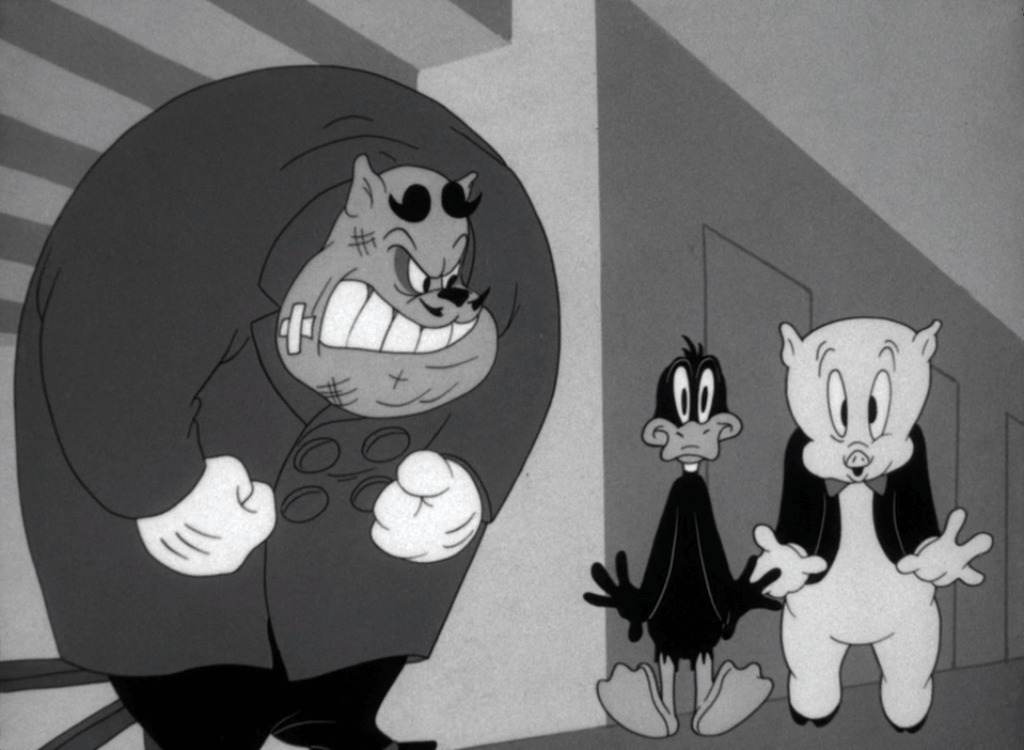The Best Cartoons Right Now are the Most Human
What comes to mind when you hear the word cartoony?
Bugs Bunny smiling beside an indignant Daffy Duck who’s sporting a backwards beak? The impossibly slow sloth at the DMV in Zooptopia and his hysterical, drawn-out laugh? Or maybe it’s Wile E. Coyote falling so far that he becomes a tiny dot before creating that unforgettable little ring of dust when he hits the ground?
As unrealistic or violent as these images are, they probably also conjure an inner smile because all of these gags are executed with comedic intent. Also, we were somehow reassured that none of those characters actually got hurt. At the very worst, they were just embarrassed, frustrated, or even tickled. Sometimes they even liked it! They always came back for more, and so did we.
I’m pretty sure none of us have literally gone through what Bugs, Daffy, and Wile. E Coyote have, or at least I hope you haven’t! What’s more important is that, even when those characters experienced multiple failures, they didn’t change. They’re kind of like constantly resetting gag-bots. Otherwise, you’d think that old coyote would maybe start working on a new life goal.

OswaldLR, Public domain, via Wikimedia Commons
These beloved characters’ misadventures are partly why cartoons have remained a long-term staple of our content diets. They present us with cartoonish situations that are so outrageous and impossible for real people to experience that it appeals to our inner, illogical, fun-loving-child. I think there will always be silly, outlandish cartoons that capture young and young-at-heart audiences. But over the past decade (and definitely since animation’s inception in Japan), cartoons have been offering something more - a human experience. Those shows are the ones I’d like to honor in this blog because, of all the animation being produced these days, which is a LOT, they’re my favorite.
Now, you may be wondering what specifically I mean by the “human experience” because that’s kind of a broad term. If we go through literally anything in our lives, isn’t that the human experience? Yes, it is! In a way, that’s part of the humanness of current animation, which is unlike the animated characters I first described. But if we think about the human experience, we usually aren’t talking about day-to-day stuff. We’re talking about those experiences we remember most fondly (or most painfully) because they made us feel something, and that feeling stuck with us because it was emotional. It made us feel human.
What I think is happening right now in animation is this idea that cartoons, many of which wouldn’t even categorize themselves as such, are getting real. I’m not talking about visuals, although some toons are getting so real that there’s literally an engine called Unreal that’s capable of making things SO real, it’s unreal. Did you follow all that?
Realistic chimpanzee created for National Geographic Museum's Becoming Jane: The Evolution of Dr. Jane Goodall exhibition.
No, I’m talking about emotionally real. The animation industry has discovered that the medium can talk about our humanness in ways that live-action movies or television series also strive to achieve. In doing so, it has adopted fresh techniques, different approaches, and a new tone to help us do something that was often thought impossible in animation - feel something truly emotional. And isn’t that, after all, the human experience we all want? Let me share some examples.
City of Ghosts is a series on Netflix that I adore. It’s technically meant for kids because the premise is simple and cartoony enough. Visually, it’s quaint, stylish, and reductive, like Animal Crossing on Nintendo Switch. It’s about a kids club focused on hunting ghosts in modern-day Los Angeles. Now, on paper, you might be thinking that’s Scooby Doo, where each episode involves a maligned adult who’s tricking some hapless innocents so he can scare them out of a property - and he could have done it, too, if it ‘weren’t for those darn kids!’ But City of Ghosts couldn’t be further from this archetype.
First of all, City of Ghosts is truly a love letter to the real Los Angeles - the one only the locals know. In fact, the first episode is about a neighborhood I personally lived in called Boyle Heights. Secondly, there are almost no professional actors. Much of the dialog is generated through a clever combination of real-world sounding interviews and scripted lines. Finally, although there are ghosts who consistently appear as smoky clouds with simple features, they’re harmless. Their intentions are simple, sad, and relatable. Through ghost-hunting, discovering a neighborhood’s history, and showing a lot of empathy towards people they meet, our little club establishes a meaningful connection to the local scene. It’s really something, and it’s deeply human.

Photo by Mollie Sivaram on Unsplash
Another gem, also on Netflix, is The Midnight Gospel. The premise here couldn’t be more insanely sci-fi, but it works for a very simple reason. The main character in this series is an intergalactic podcaster who owns an infinitely powered (and touchy) machine that transports him to any planet in the universe and also changes his form to match the creatures of that planet. Once there, he just interviews the inhabitants. That’s it! The incredibly talented co-creators of this show, Duncan Tressel and Pendelton Ward, use this veneer as a way to play their own real-world podcast. Hence, the series is 85-90% real interviews, with lines specifically added to remind the audience that the characters they’re watching are the ones talking. On top of this are some of the most trippy, insane visuals you’ll ever see - somewhere between the animated Yellow Submarine Beatles movie, Adventure Time (Pendelton Ward is, in fact, the creator of Adventure Time), and a Yes album cover by Roger Dean. (Ask your parents or your parent’s oldest siblings.)
The guest list includes a rogues’ gallery of celebrities that covers topics like mysticism, magic, and religion. One especially poignant episode explored dealing with the death of parents. In fact, during the last two episodes, Duncan replays the podcasts that featured his real-life mother, who discussed the subject of death. The wonderful and tragic side of that story is his mom actually passed away long before production began on the series. So, the show highlights this wonderful, life-affirming, and beautifully sad discussion about death by leaning on the real-life experiences of the show’s creators. It’s unlike anything I’ve ever seen. It left me in tears, and it also made me more sensitive to the people in my life whom I love and adore, including both of my parents, who are still alive.
With both of those examples in mind, please allow me to list a few other cart…ahem, I mean, animated series, that also exhibit some of the best in humanness (while still keeping some of the things that cartoony cartoons do best).
- Bluey - It’s a family of blue dogs. But most importantly, it’s a wonderful family that understands the true joy and value of at-home play.
- Yuri on Ice - It’s a Japanese anime about ice-skating, competition, the humor in humility, and the beautiful and under-the-surface romance between two men who are both named Yuri.
- The Dragon Prince - Come for the fantasy about elves, dragons, and mortal men, but stay for the drama about a father, his sons, and the wisdom we pass (or fail to pass) to the ones we leave behind.
- Ask the StoryBots - It’s as silly as they come. Real kids ask animated characters questions, and those characters (along with celebrity cameos and top-talent-production songs) help explain to us all how the real world works. It’s the heir apparent to Schoolhouse Rock!
- Summer Wars - Another anime, but this one’s a movie and is more than ten years old. It’s still one of my favorites, though. The story is centered on an emotionally stunted young boy, who happens to be a mathematical genius, and a wild internet AI. Together, they wreak havoc in a virtual world. What it’s really about is how a grandmother and her gigantic extended family (all of whom have direct lineage to samurai) pull together to save the world. It’s also about who slips into their inner circle and how, surprisingly, lies and loneliness can sometimes lead to true love.
At Falcon’s, we fully intend to capitalize on this humanness trend. As we continue to tell imaginative, original stories, we’ll strive to create emotional connections between our audiences and the characters and their worlds. It’s our goal to reset people’s expectations for how animation can make them feel. By starting with the human factor, we know we are on the right path.



